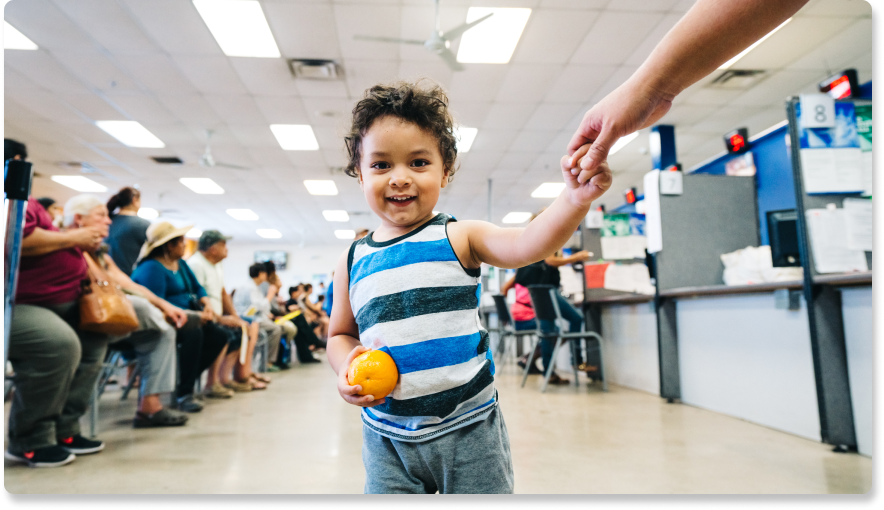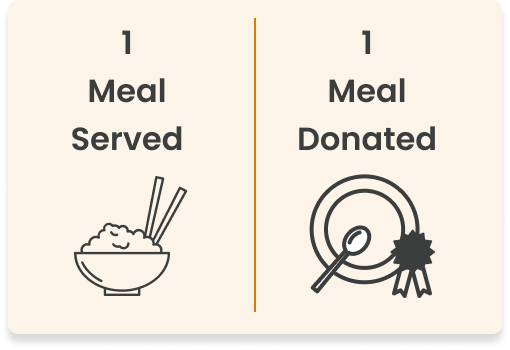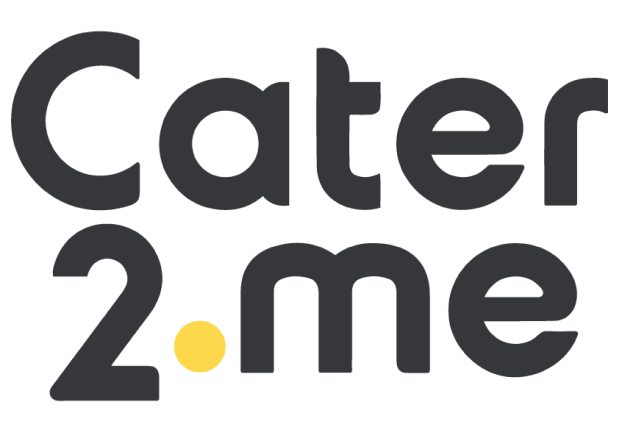After a year of uncertainty and stress surrounding our health, finances, and the overall state of our nation, it’s time to start rebuilding our communities. Many Americans are still feeling the harsh effects of business closures, quarantines, and large lay-offs brought on by the pandemic, and one of the most widespread of these effects is that of hunger. Hunger affects millions of our neighbors across the country each year, and many of them turn to resources like governmental assistance, food banks, and shelter programs to stay afloat.
To do our part in combating hunger in our communities, we are excited to partner with Feeding America®, the nation’s largest domestic hunger-relief organization, to help provide 1.5 million meals* to families across the country. The Feeding America network of food banks serves more than 40 million people in America each year, and we are thrilled to tackle the shared goal of helping neighbors facing hunger throughout the nation.
Before we talk more about our efforts, let’s take a closer look at the issue of hunger in the United States.
Hunger in the United States
Even though overall food insecurity rates in the United States had reached their lowest point since it began to be measured in the 1990s, the pandemic halted those improvements; Feeding America estimates that 45 million of our neighbors (1 in 7) may have experienced food insecurity in 2020. This is a startling jump from 35 million people in 2019 and this number remains high in 2021 as Feeding America projects that 42 million people may face hunger over the nest year. This increase could be attributed to unemployment claims climbing to a record high of 7 million in April of 2020 as last spring saw a 14.7% rise in rate, which is the largest monthly increase since 1948.
While food insecurity and poverty are connected, they are not the same. The USDA reports that 33% of food-insecure households live above 185% of the poverty line (which is still less than $50,000 for a family of four). Of the millions of people in the United States facing hunger, 50% are below the Supplemental Nutrition Assistance Program (SNAP) threshold of poverty, making them eligible for those supplemental meal programs.
Hunger in the United States: 5 Key Facts
- 35 million people lived in poverty as of 2019, earning less than $25,000 per year
- 42 million people may face food insecurity in 2021
- 13 million children may face hunger or food insecurity in 2021
- 16 percent of children who need help have access to national summer meals programs
- 21 percent of Black individuals may experience food insecurity (twice the rate of White individuals)
What is Food Insecurity?
Food insecurity is defined as “a lack of consistent access to enough food for every person in a household to live an active, healthy life. This can be a temporary situation for a household or can last a long time”. People who are food insecure may not be at risk of hunger all the time, and it may align with a household’s need to choose between important basic needs like bills or housing, and purchasing adequate foods for their family.
Who Is at Risk of Hunger?
Many factors can contribute to a person becoming at risk of hunger, and the pandemic has only heightened this issue with increased layoffs, medical bills, and increased food costs. Global food prices have risen 38% since January 2020 and since pandemic closures have reduced many household incomes, more families are having to cut back on their food consumption. As COVID has made us realize, many people are just one unexpected event away from financial insecurity; in fact, 40% of Americans are only one missed paycheck away from poverty. This lack of funds forces people to make serious choices about their purchasing habits.
Black, Latino and Native American households are disproportionately affected by hunger compared to white households. One in 12 white, non-Hispanic individuals lived in a food-insecure household; this jumps to 1 in 6 for Latino individuals, 1 in 5 for Black, non-Hispanic individuals, and 1 in 4 for Native American individuals.
And with the school year ending for the summer, many households will experience additional stress as school-aged children no longer have access to meals provided through their schools. In 2019, 1 in 7 children were food insecure; this year, 1 in 6 kids may face hunger as a result of the pandemic.
How Can Hunger Affect Families?
Hunger negatively affects households both physically and mentally. The turmoil brought on by not being able to fully provide for your family can have damaging effects on the mind. Increased rates of depression and anxiety are directly associated with hunger, with mothers being more than twice as likely to report mental health problems. In addition, a study from Health Affairs reports that adults who are facing hunger typically face a greater risk of diabetes, hypertension, hyperlipidemia, poor overall health, poor sleep, and more.
Children, on the other hand, see even more health problems associated with hunger. This group sees increased risk of stunted development, anemia, lower nutrient intakes, asthma, worsened oral health, and increased hospitalizations. It also wreaks havoc on children’s mental health; hunger is also widely associated with aggression, anxiety, behavioral issues and depression.

How we’re helping
Our “Teams Fighting Hunger” partnership with Feeding America aims to combat hunger in communities across the United States. As part of our commitment, fifty percent of our donations will support the Feeding America network of food banks. The other half will be split evenly between San Francisco-Marin Food Bank and New York City-based City Harvest, two Feeding America member food banks located in areas where Cater2.me has deep ties, having operated there for more than 10 years.

Since our founding in 2010, our mission has always been to support local communities by bringing great foodservice businesses into our clients’ offices. Over the years, we’ve broadened this support to include local partnerships with food rescue organizations including Food Runners, Re-Plate, and City Harvest, as well as food banks like Bowery Mission and other organizations working to reduce food waste and combat hunger in our communities. We continued this support during the COVID-19 pandemic, partnering with clients to provide meals for organizations like Second Helpings, which works to reduce hunger and food waste in the Metropolitan Atlanta area.
About Feeding America
Feeding America® is the largest hunger-relief organization in the United States. Through a network of 200 food banks and 60,000 food pantries and meal programs, they provide meals to more than 40 million people each year. Feeding America also supports programs that prevent food waste and improve food security among the people they serve; educates the public about the problem of hunger; and advocates for legislation that protects people from going hungry.
Want to learn more about how you can feed your team and fight hunger? Get in touch with us!
In the meantime, take a look at hunger in your community with Feeding America’s Map the Meal Gap Map.











